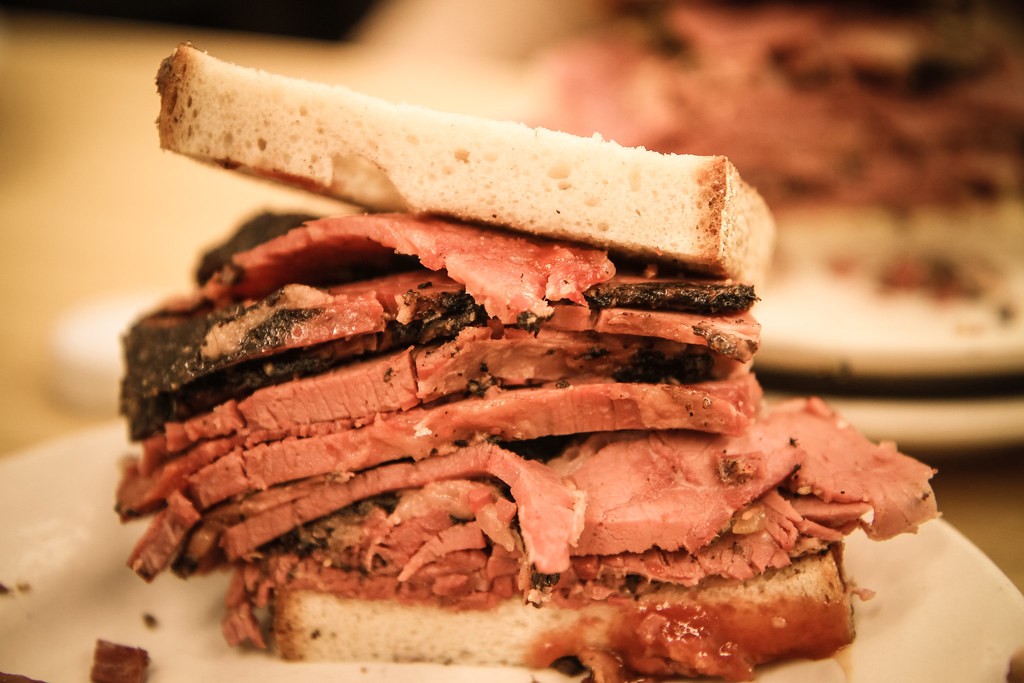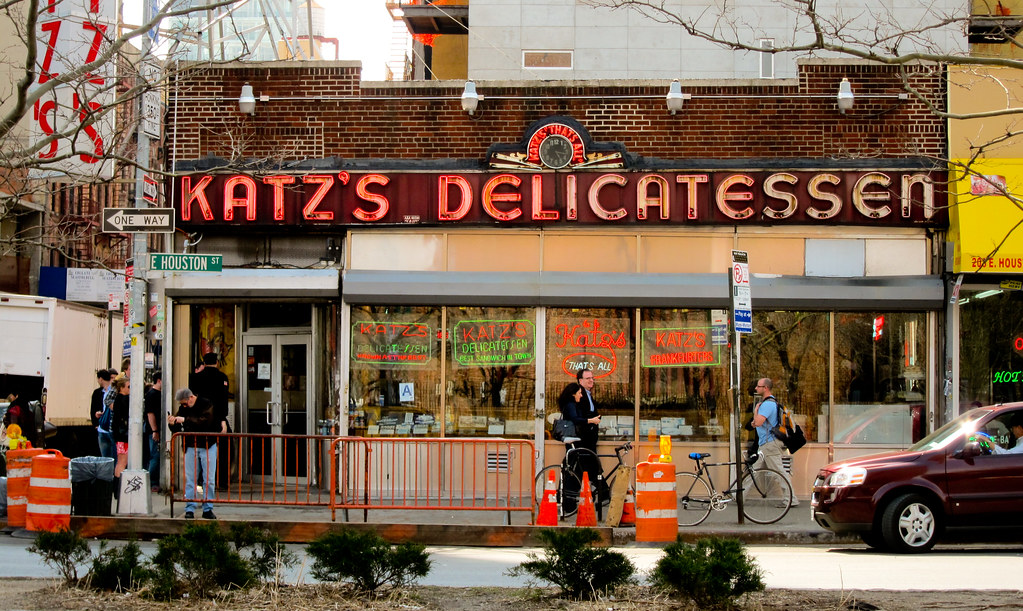The deli is a New York city institution, the place to go to for juicy, piled high pastrami, corned beef or roast beef sandwiches. And let’s not forget the bagel, an iconic bite of the Big Apple. Lox and cream cheese anyone?
Claims have been made that the New York deli is dying out, but data shows that the number of delicatessens in two popular New York City neighborhoods has increased substantially this century, despite the overblown claims of their demise.
Among the most famous are Katz’s Delicatessen, Frankel’s Delicatessen & Appetizing and Barney Greengrass. Zabar’s is more than just a deli; it’s a specialty food market that sells everything from cheese and coffee to kitchenware and gifts.
The 2nd Ave Deli is even more quintessentially New York. This kosher deli has been serving classic Jewish fare since 1954. You can enjoy their schmaltz-laden chopped liver, matzo ball soup, knishes, kasha varnishkes and more.
To refute claims of the deli’s decline, you can look at data from the New York Public Library that shows that the number of delis has actually increased substantially since the 1970s on the Upper East Side and Upper West Side.
Some are staying true to their roots. “Trying to keep that tradition going,” said Gary Greengrass, owner and grandson of the man who started it all in 1929. Greengrass has tried to keep the old-school charm going on the Upper West Side on Amsterdam Avenue between West 86th and West 87th streets.

“It’s been here more than 60 years. I had a few decorative painters here for five days to fix it up and make it look like it’s always been there,” Greengrass said. “And that’s the look I want. Probably cost me five times what it would cost to put on new wallpaper.”
The number of delis just about doubled from 1973 to 2000 on the Upper West Side and Upper East Side, according to copies of the Yellow Pages that NY1 examined at the New York Public Library. But from 2000 to 2023, while the number of delis on the Upper East Side decreased by about 12% during, on the Upper West Side they increased by nearly 50%.
But what cannot be denied is that they are changing. “I would never say that the deli is dying because it doesn’t feel like it,” said Ben Nadler, who wrote a book called “The Jewish Deli: An Illustrated Guide to the Chosen Food” that examines the past, present and future of the industry.
Nadler adds though, that rather than disappearing, delis are simply changing. They have become a food genre, available just about everywhere and for just about everyone, from the corner store to the grocery store.
Nadler called it “The invention of the contemporary Jewish deli.”
Who would have thought of a vegan deli, for example? It’s almost an oxymoron. But this is one way to try to attract a younger clientele. Slobodski said this is his goal for PJ Bernstein Deli, as well.
Other major changes that reflect today’s trends are an increased focus on online sales and takeout. But have no fear, they are still sticking with what they do best. New York may be the city that never sleeps, but it’s also one that values its traditions—especially those that give it its indelible identity.












